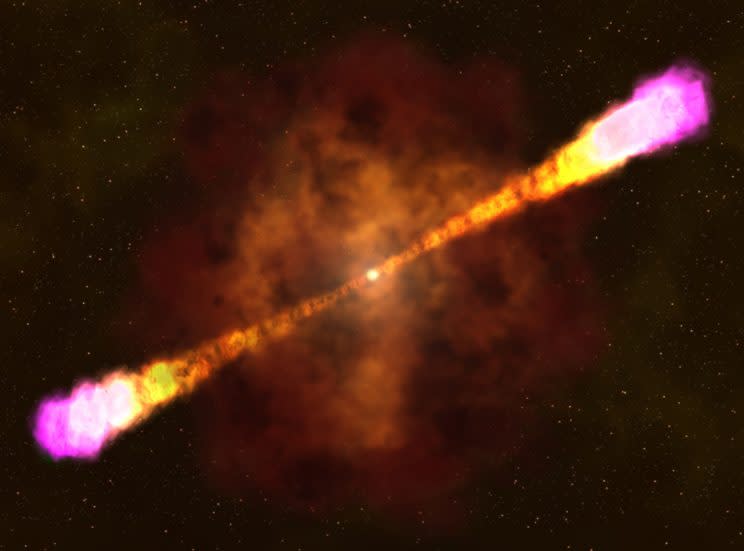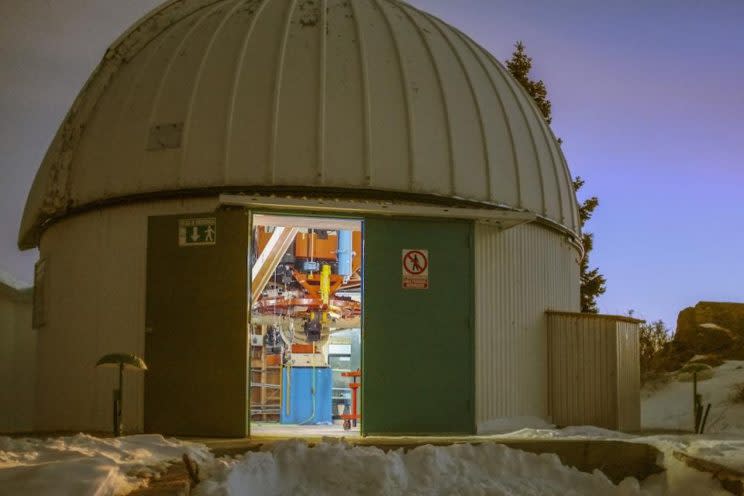Telescope captures ‘biggest explosion in the universe’

A telescope captured a blast of gamma rays of almost unimaginable power last year – releasing in 40 seconds the energy that our sun will release in its entire lifetime.
The titanic explosion was the dying blast of a massive star – focused into a tight beam of gamma rays aimed by chance toward Earth.
‘Gamma ray bursts are the brightest explosions in the universe,’ said Nathaniel Butler of Arizona State University.
‘And we were able to measure this one’s development and decay almost from the initial blast.’

The gamma-ray blast on June 25, 2016, was detected by two NASA satellites that monitor the sky for such events, the Fermi Gamma-ray Space Telescope and the Swift Gamma-Ray Burst Mission.
MOST POPULAR STORIES FROM YAHOO UK:
Millionaire boss who branded Corbyn a ‘tw*t’ insists radio rant featured ‘the right words’
Going underground: New Crossrail images show futuristic architecture of tunnels
Donald Trump just banned transgender people from serving in the US military
Village chiefs in Pakistan order ‘revenge rape’ of girl, 16, over brother’s alleged assault
Theresa May just quietly abandoned an election manifesto pledge
The satellite observatories detected the burst of gamma rays, identified where in the sky it came from, and sent its celestial position within seconds to automated telescopes on the ground.
While gamma-ray bursters have been known for about 50 years, astronomers are still mostly in the dark about how they erupt.
“Despite a long history of observations,” Butler said, “the emission mechanism driving gamma-ray bursters remains largely mysterious.”
After observing the 2016 explosion, researchers now believe that the early shocks generated by the bursts may be magnetically driven.
Gamma-ray bursts are detected approximately once per day and are brief, but intense, flashes of gamma radiation.
They come from all different directions in the sky, and they last from tens of milliseconds to about a minute, making it hard to observe them in detail.
Astronomers believe most of these explosions are associated with supernovas.
These occur when a massive star reaches the end of its normal existence and blows up in a colossal explosion.
A supernova throws off some of the star’s outer layers, while its core and remaining layers collapse in a few seconds into a neutron star or, in the case of highly massive stars, a black hole.

 Yahoo News
Yahoo News 

